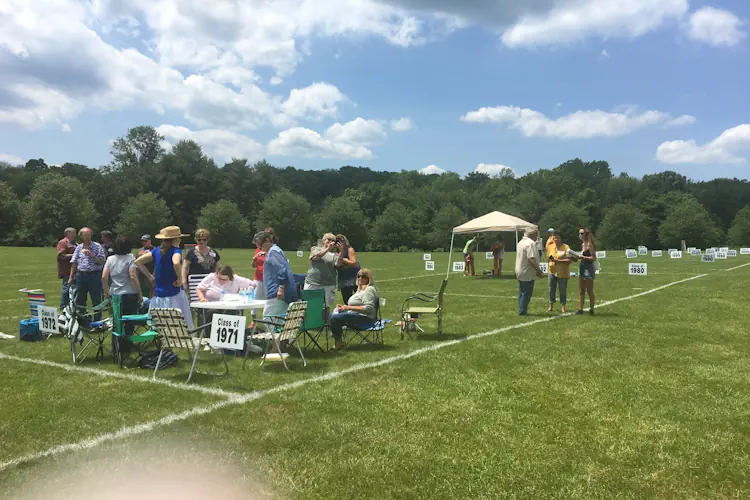


Christina Balotescu
February 14, 2025
In June of 2017 I attended the all-class reunion for my high school alma mater. The event itself was well organized, but guess what all the marked-off class spaces on the field looked like at the height of the event: a ghost town!

No, the alumni weren't away on a nostalgic stroll down the school's halls, searching for their old lockers; they just didn't show up. There had been no comprehensive outreach planned and executed. The same old list they had been using for years was used.
Driven by my passion for connecting people and numerous ideas on effective alumni engagement, I introduced myself to the organizers and shared a few ideas to make next year’s event more successful. Ideas like engaging leaders from every class, starting with original class lists, breaking down the data into manageable chunks and maintaining their list every year. They asked me to join their board of alumni and I was thrilled to have the opportunity to help.
Thus began my vision of a large, vibrant, and mutually beneficial alumni network for my hometown alma mater.
The volunteer-led alumni board I joined lacked a strategic structure, resembling more of a bi-monthly reunion of friends than a purposeful team. Despite shared enthusiasm for providing $500 scholarships to graduating seniors, essential elements like project management, technology, and marketing were missing from the dialogue.
In my first meeting, the post-picnic review focus was on minor expenses, rather than the major expenses, the modest proceeds and learnings to apply to the next event.
When I think of the thousands of people who went to my high school - the potential alumni network, I imagine plenty are curious to see what's going on. They would attend a reunion, or at least engage online. Many would likely be willing to help if they only knew what was needed.
Recognizing this potential, I proposed target goals and metrics like understanding the constituent pool and establishing fundraising goals of 10% of alumni to donate $10 in year 1, and increasing to 30% of alumni donating $30 in year 2.
During the meeting, I shared my vision for a lively alumni network focused on mutual support and giving back to our community. I didn’t want to ruffle feathers in my first months, but my dream was to 100x their $20k annual fundraising goals within 5 years. I then outlined steps for our Alumni Association to achieve this ambitious vision.
By the end of our third meeting, we stressed the critical role of a complete alumni database in building a successful alumni network. We unanimously agreed to make compiling this list our top priority, focusing exclusively on this task before proceeding with other initiatives.
We also agreed on the importance of getting the active emails of most alumni and set a goal to collect 80% of them within four months.
Later on, we were delighted to have the Head of School join a meeting– a valuable ally who understands the positive impact a strong alumni network can have on the high school and the community.
We agreed that our alumni network could serve as the central database and communications hub for the Parent Teacher Association (PTA), athletics, and various community initiatives. Our alumni association had so much potential to strengthen the overall community fabric of the school.
Unfortunately, I left my high school's alumni board after a few years. I found that the vision and goals set for their alumni network by its leader were limited, focusing on raising only a small amount annually and organizing occasional picnics. There was no effort to engage younger alumni or provide them with valuable networking and career support.
The board was in the earliest stages of the Community Maturity Model, still without a valid strategy, a funded roadmap, full-time professionals, and an organization chart, among other things - despite my efforts and encouragement to address each of these needs.
Although disappointed, I hope for improved commitments in their association as leadership evolves in the future.
Fast-forward to today, however, and I am thrilled to advise dozens of alumni leaders each week in setting the right course for building the alumni network and supporting overall alumni engagement success. As CEO of 360Alumni, I have the privilege of helping institutions create vibrant and interconnected communities that extend the reach of the organizations that sponsor them. If you’re struggling to get your alumni association off the ground, check out “How to Build a Successful Alumni Association: A Step-by-Step Guide, or feel free to reach out any time. .
If you liked this article, you may also like:
For more information on related topics, be sure to connect with us!